Inside Turkey’s ‘hidden’ ski world | CNN
Editor’s Note: This CNN Travel series is, or was, sponsored by the country it highlights. CNN retains full editorial control over subject matter, reporting and frequency of the articles and videos within the sponsorship, in compliance with our policy.
CNN
—
Peering out of the plane window, he spotted the priceless “white gold.” Towering, snow-laden peaks stretching for miles on the southern edge of the Black Sea.
It was as if he could see his future. He knew he’d have to take a closer look.
Swiss mountain guide Thierry Gasser was on his way home from a heli-skiing trip in Kyrgyzstan in 2001, when from his seat he saw the familiar Caucasus mountains to the north and an intriguing chain of shining peaks to the south.
Gazing through “perfect blue skies,” Gasser was looking at the Kaçkar range in northeast Turkey.
“The first look from the plane was perfect, they were huge mountains and a large mountain range – that was the green light for us to go there and check every valley and every mountain,” Gasser tells CNN Travel.
He was already on the lookout for a destination in which to set up his own heli-ski business after years of working around the world as a guide for other operators. He had only three criteria: proximity to Europe to avoid jet lag, a big, high-altitude mountain range, and – ideally – a coastal location for higher snow quantities and a more stable snowpack.
Gasser had spent plenty of time guiding clients in the Russian Caucasus, as well as in Uzbekistan, India, Canada, Alaska and across Europe. A new frontier for heli-skiing was also on the list.
Poring over the maps, Gasser and Italian guiding friend Danilo Garin realised that the 75-mile (121 kilometer) chain of the Kaçkar range, near Turkey’s border with Georgia, seemed to tick all the boxes.
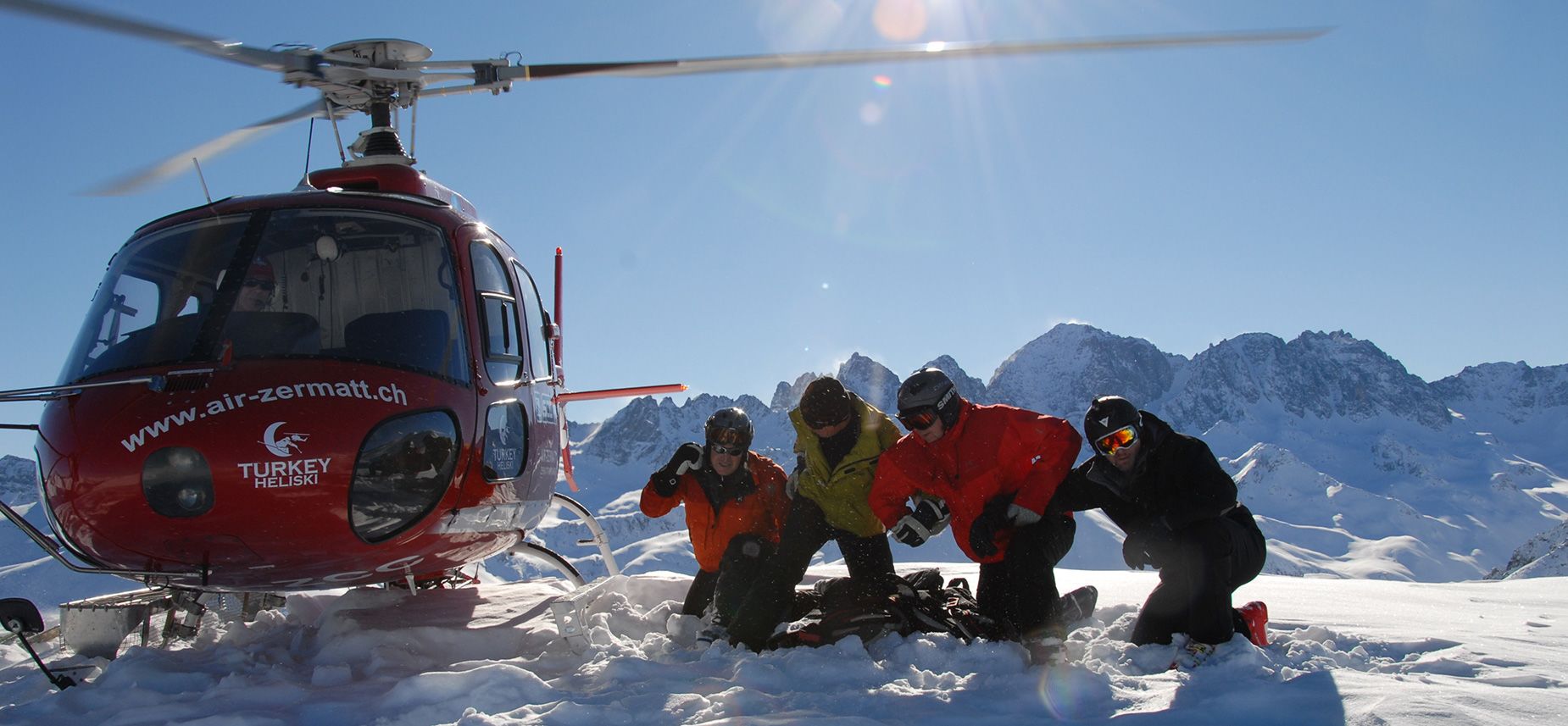
In the summer of 2002, Gasser spent a month on the ground in the area, hiking the valleys, assessing the local facilities and flying over the mountains – the highest of which is Kaçkar Dagi at over 13,000 feet (3,962 meters).
“The shape of the mountains is perfect for heli-skiing,” says Gasser, who is based in Verbier during winter. “In every valley it’s possible to do more than 50 runs if you want and it’s very close to the base – less than five minutes flying. For the guests, it’s perfect.”
He zeroed in on the small resort of Ayder, a traditional “yayla” or summer highland pasture village, with wooden pitch-roof houses and barns, surrounded by pine forests and waterfalls.
The village – in a lush, narrow valley carved by the Firtina river – is popular in summer with regional tourists and visitors from the Middle East with activities such as hot springs, rafting and hiking.
In winter, moist air from the Black Sea mixes with cold mountain air to produce plentiful powder snow at altitude from January to April.
“It’s just epic skiing,” says Oliver Evans of Elemental Adventure, a London-based heli-skiing agency which organizes trips for small groups and private clients to more than a dozen exotic mountain locations worldwide.
“You just don’t realize you’ve got this Canadian-style heli-skiing right on the doorstep of Europe.
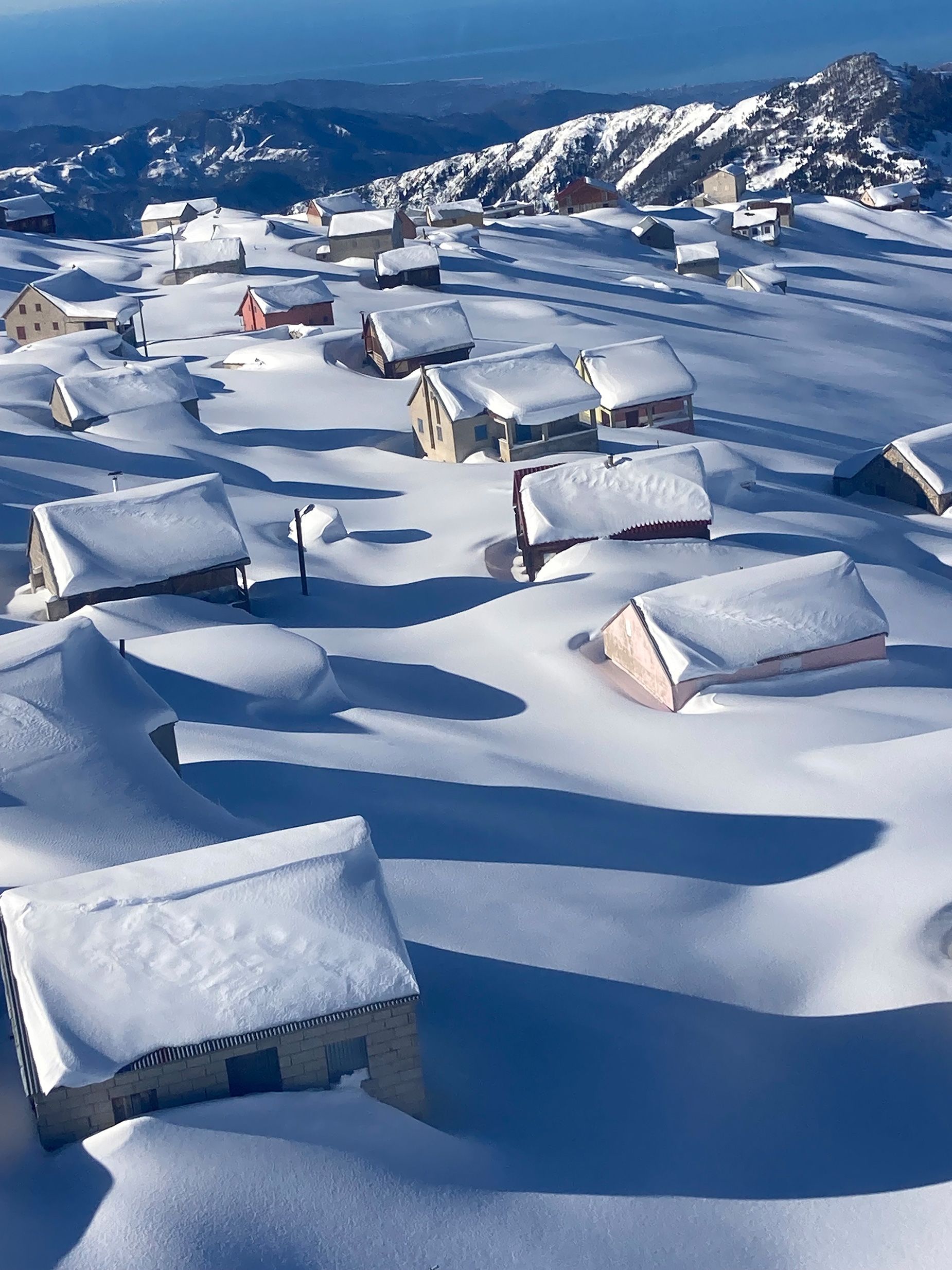
“You’ve got these little villages up there which are abandoned in the wintertime with deep snow on the roofs, and mosques. It’s quite exotic to wake up in the morning and hear the call to prayer going on outside the hotel. It’s the last place you expect to be skiing.”
Gasser ran his first trips from Ayder in 2005 with one helicopter, rented from Air Zermatt in Switzerland.
“They opened the road and opened one hotel just for us,” said Gasser.
“We were alone in this village. Now at the weekend plenty of people come there to see the snow, to play in the snow with sledges or with tubing, light a fire or have a barbecue on the snow, with singing and dancing. But when we started, nobody was there in the winter.”
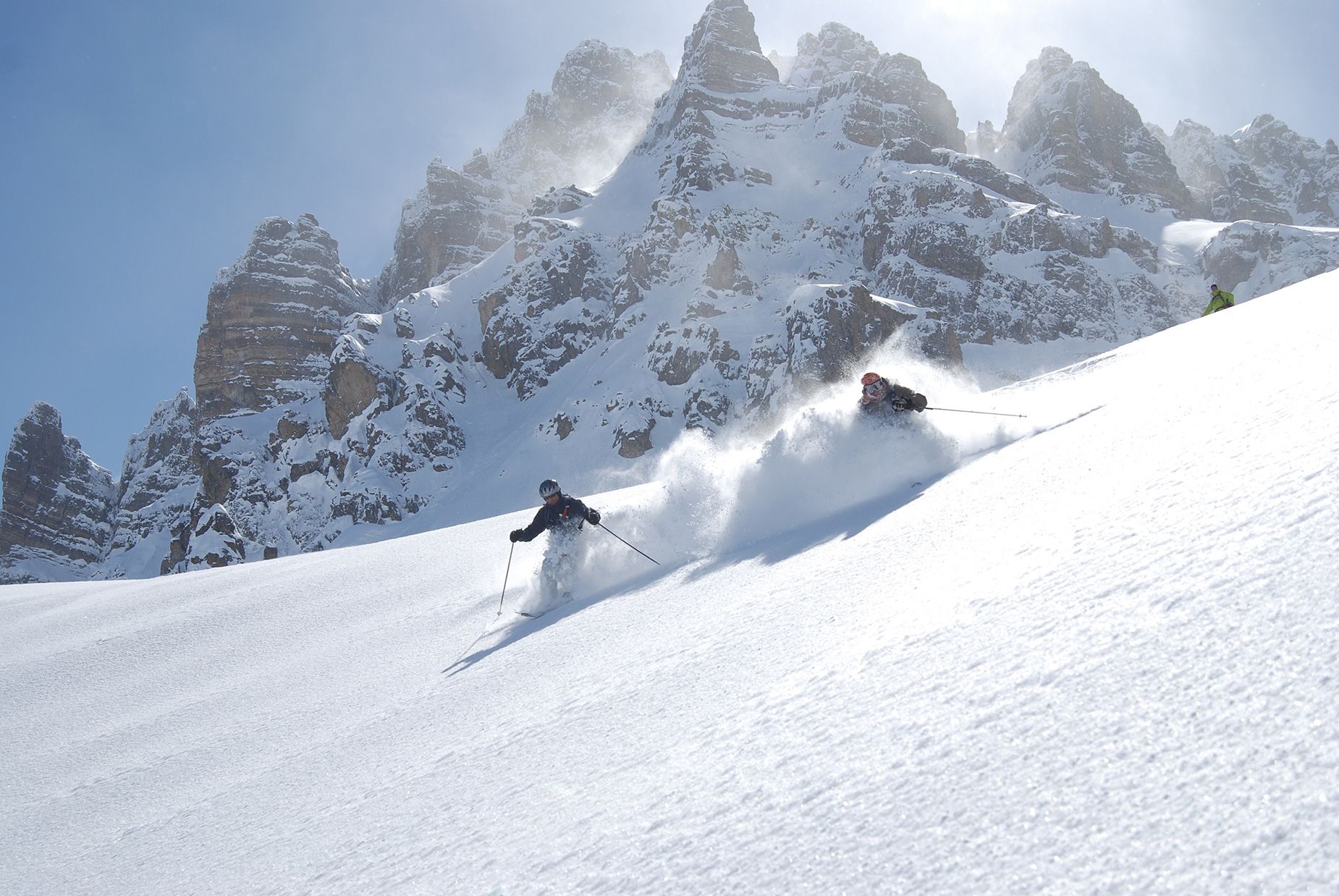
Bureaucracy forced Gasser to shut down the operation after a few years, but he remained eager to return and was able to reopen in 2018, with exclusive access to a nearly 2,000 square mile tenure – enough to fit in a large chunk of the French Alps and some of Italy – reserved for about 20 skiers per week.
In January 2023, with snow in the European Alps thin on the ground and expectations low, Evans flew out to Istanbul and then made the short hop to local airport Rize, just an hour’s drive from Ayder, to run a trip for clients. Trabzon is another regional airport option, two hours’ drive away.
The first day, he says, it was “absolutely dumping.” He took some clients up through the forest in a snowcat to do some avalanche rescue training and assess their ability, skiing back down to the village via a tiny trackside café for a cup of local Turkish tea.
“You’re skiing past, and all these people are looking at you like you’ve come from Mars, they’re not particularly familiar with seeing people skiing there,” says Evans.
The following morning the weather had cleared and Evans, one of the clients, and guides Georg and Yann clambered into the helicopter sitting right outside their hotel base, the three-star Hasimoglu in Ayder.
Swiss pilot Dany eased the machine above the frosted trees and out of the valley, opening up a dazzling vista of pristine peaks with the Black Sea glimmering to the north. Minutes later he dropped them at the top of a slope nicknamed Home Run.
“It was a bluebird, not a cloud in the sky, cold, 70-80 centimeters [28-31 inches] of new snow on the base. Just unbelievable,” says Evans.
They waited for the storm of the blades and the wop-wop-wop sound of the heli to disappear. There was a moment’s silence to savor the beckoning slopes beneath them before the guides calmly outlined the plan. None of the frenzy of a resort powder day up here.
“My first turns of the winter and it was thigh-to-waist, light, proper cold-smoke powder,” says Evans.
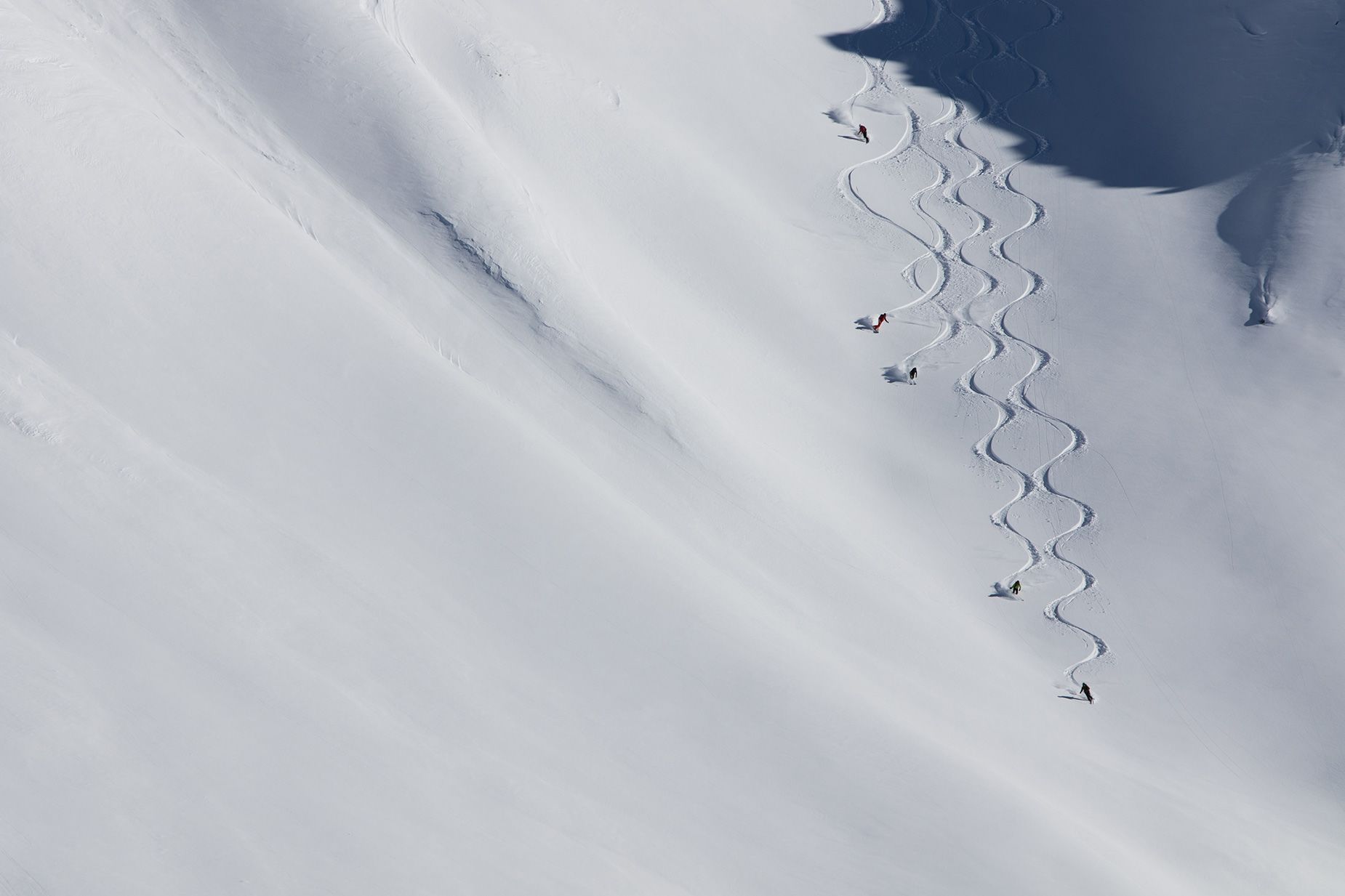
“The client and I were both giggling like school kids, we just could not believe our luck to have scored it this big on the first day of the season. You could tell even the guides were thinking that this was off the charts.
“There was a lot of whooping and high-fiving going on, it was pretty American. In the first hour and a half I probably skied more untracked powder than I had in the last 10 years.”
After a morning dancing through feathers, they touched down on a ridge for lunch and munched on sandwiches, hot soup, chocolate, fruit and nuts, plus tea, coffee and drinks from the helicopter cool box.
“We were outside this little deserted village with snow folding over the roofs of these little shepherd huts, and the minaret of the mosque just to remind you that you’re in Turkey and not British Columbia,” says Evans. “It was probably my best day’s skiing ever.”
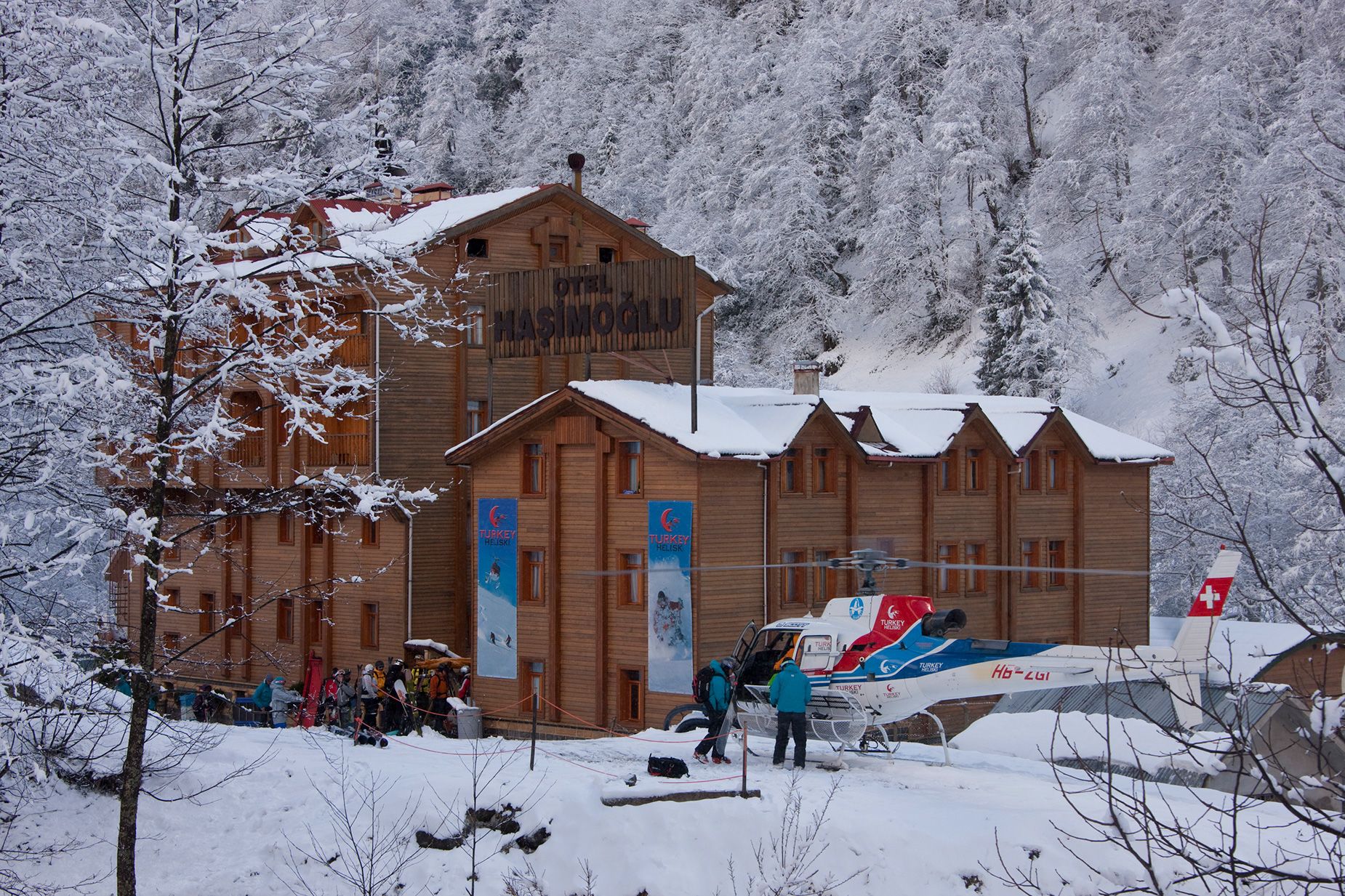
The average run in Ayder is about 900 vertical meters (nearly 3,000 feet) and clients can expect to ski about about 11-15 runs per day. Professionalism and safety are paramount, and the guides are constantly monitoring the avalanche risk.
“There is a misconception about heli-skiing that it’s quite extreme but on the whole, it isn’t,” says Evans. “You’re not jumping out of helicopters; you’re stepping out of them very carefully, slowly and deliberately. There is a saying, ‘slow is fast’. There are a few women doing it but there’s no reason there couldn’t be more.”
Apres ski at the Hasimoglu, which was refurbished in 2016, is generally low key.
Guests relax in spring-fed hot baths, sip Turkish coffee or drinks from the bar, play table tennis or visit the on-site masseurs.
Dinner is buffet style with plenty of salads, humus, pitta, falafel, kofte, aubergine, tomatoes and grilled meats. Local specialities include hamsi kusu, a dish of Black Sea anchovies, or muhlama, made of corn flour, butter and cheese.
Gasser’s rotating line-up of guides come from all corners of the globe: Switzerland, France, Italy, Germany, Austria, Sweden, New Zealand, Canada, USA. With the local Turkish staff, it makes for a cosmopolitan mix.
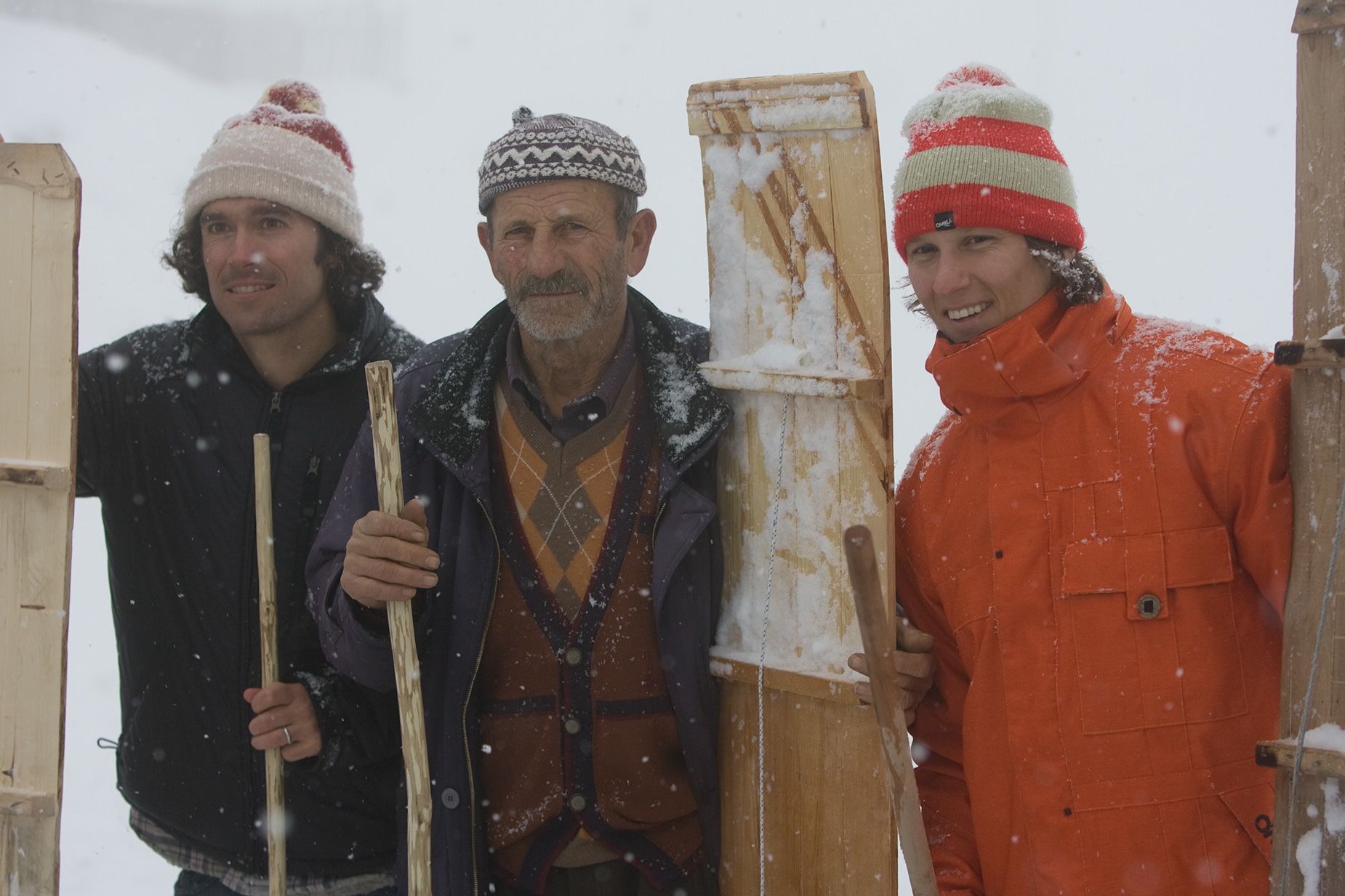
“The Turkish people are very nice, welcoming, very open, they help us a lot, it’s a big pleasure to work with them,” he says.
On bad weather days, alternative activities include skiing from the snowcat, snow shoeing or ski touring. Guests can visit a tea plantation, honey-makers and craft centers, or relax in local restaurants.
When famed American snowboarder Jeremy Jones was a guest, some of the locals revealed they had been riding around the village for more than 60 years on old wooden boards, with rope handles and a stick to steer.
“Maybe snowboarding started there, in a small village in the Kaçkar mountains, not in the USA,” laughs Gasser. “It’s a great story.”
Progress is in the air in Ayder, and the Turkish government is exploring projects to develop a proper resort with ski lifts. Turkish President Recep Tayyip Erdoğan, who hails from Rize, even visited the region in 2020 to promote winter tourism.
The Kaçkar mountains could soon be on the world ski map, and not just for heli-skiing.
“We will be very happy if, one day, there is a ski resort in Ayder,” says Gasser.


